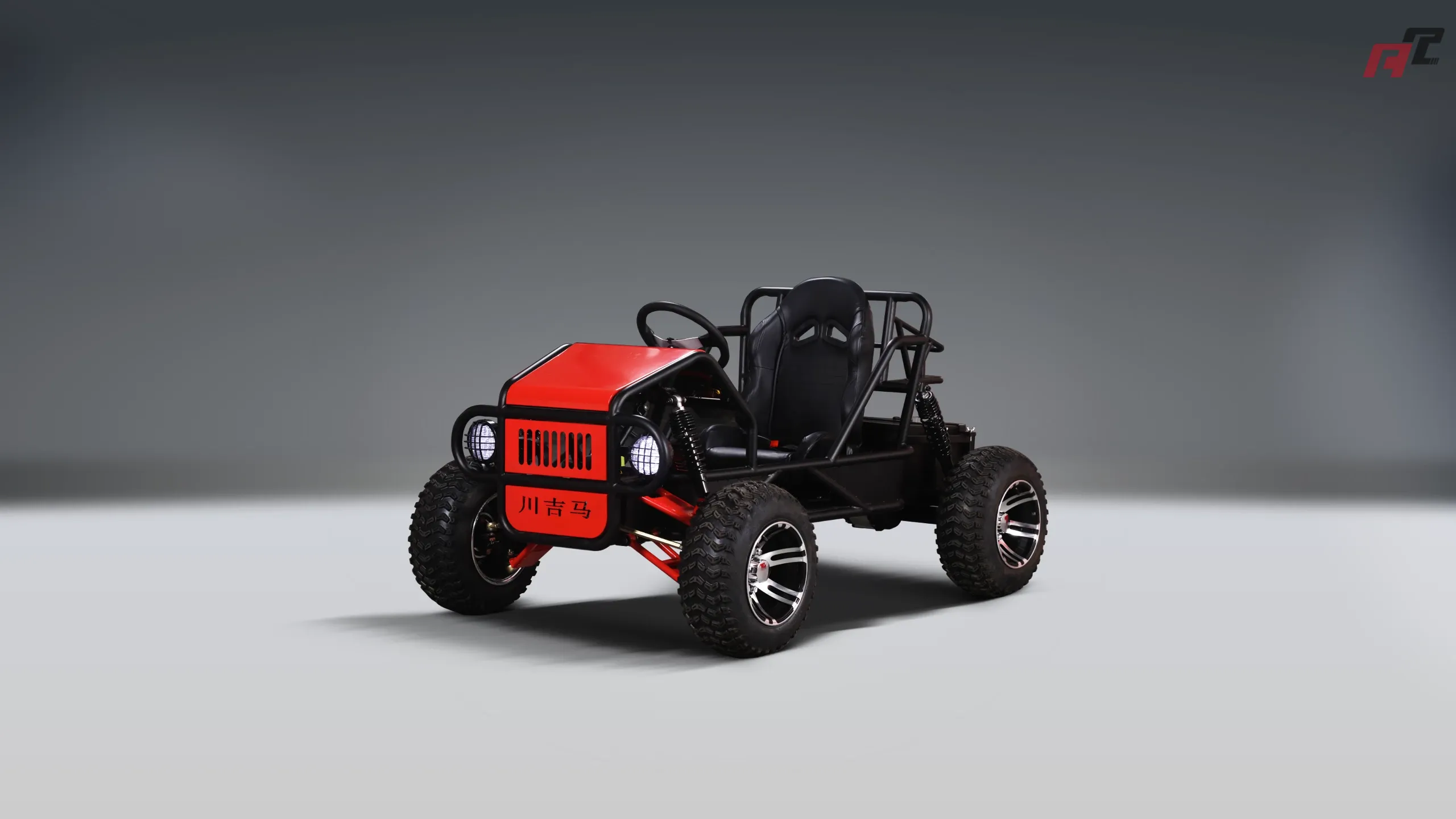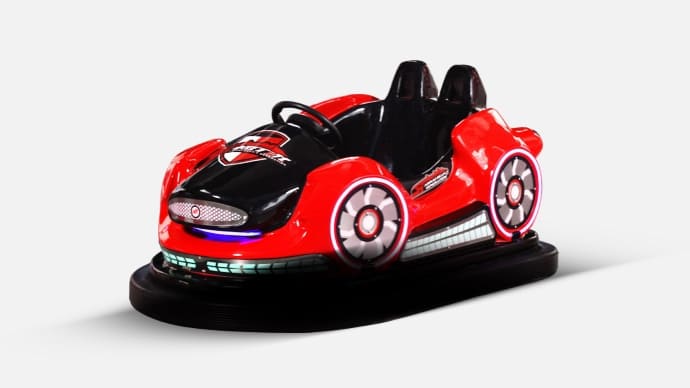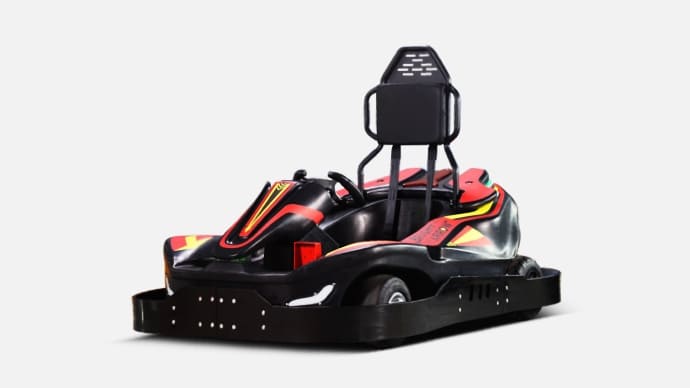How Battery Technology Impacts Bumper Car Performance
- How Battery Technology Impacts Battery Bumper Car Performance
- Why battery choice matters for Battery Bumper Car operators
- Common battery types used in Battery Bumper Cars
- Energy density and weight: how battery size changes handling
- Cycle life and total cost of ownership (TCO)
- Charging time and operational uptime
- Safety and thermal management considerations
- Maintenance and venue operations
- Design implications: torque, center of gravity, and ride feel
- Environmental impact and end‑of‑life handling
- Side‑by‑side comparison: battery types for Battery Bumper Cars
- Practical recommendations for venue owners
- How ANCHI Amusement supports Battery Bumper Car projects
- FAQ — Common questions about Battery Bumper Car batteries
- Q: Which battery is best for commercial Battery Bumper Cars?
- Q: How long will a bumper car run on one charge?
- Q: Is fast charging safe for amusement batteries?
- Q: How many spare battery packs do I need for a venue?
- Q: What are the long‑term savings of switching from lead‑acid to LiFePO4?
- Q: Can ANCHI customize Battery Bumper Cars with specific battery systems?
How Battery Technology Impacts Battery Bumper Car Performance
Why battery choice matters for Battery Bumper Car operators
Choosing the right battery for a Battery Bumper Car directly affects acceleration, run time, ride feel, maintenance needs, safety, and total operating cost. For venue owners and manufacturers, the battery is not just a power source — it shapes vehicle design, daily throughput, and guest satisfaction.
Common battery types used in Battery Bumper Cars
The main battery chemistries seen in amusement bumper cars are flooded lead‑acid (deep‑cycle), sealed lead‑acid variants (AGM/gel), and lithium‑ion chemistries (notably LiFePO4 and, less commonly in commercial ride use, NMC). Typical pack voltages for commercial electric bumper cars and small electric karts are 24V or 48V, though individual cells or 12V batteries are also used in smaller children’s models. Each chemistry has distinct trade‑offs in energy density, cycle life, charging behavior, safety, and cost.
Energy density and weight: how battery size changes handling
Energy density (Wh/kg) determines how much energy you can store for a given weight. Lead‑acid packs typically have ~30–50 Wh/kg, LiFePO4 packs commonly reach ~90–120 Wh/kg, and other lithium variants (NMC) can be higher. A lighter battery pack improves vehicle agility and lowers center of gravity, which benefits handling and makes collisions less impactful on long‑term components. For example, replacing a 150 kg lead‑acid system with an equivalent energy LiFePO4 pack can reduce weight significantly, improving acceleration and steering response in a Battery Bumper Car.
Cycle life and total cost of ownership (TCO)
Cycle life (full discharge/charge cycles) greatly affects TCO. Typical cycle life ranges: flooded lead‑acid 200–500 cycles, AGM/gel 300–700 cycles, and LiFePO4 often 2,000–5,000 cycles. Higher cycle life means fewer replacements and lower labor and disposal costs over years of operation. Although lithium packs have higher upfront cost, their longer life often yields a lower cost per usable kWh over the fleet lifetime.
Charging time and operational uptime
Charging speed dictates how many cars can be run per day without large spare fleets. Lead‑acid batteries usually require slow charging (overnight or several hours) and benefit from battery swaps, while lithium batteries can accept faster charge rates (many LiFePO4 packs can be charged in 1–3 hours depending on charger and BMS). Practical example: a 48V 100Ah pack stores 4.8 kWh. If a bumper car consumes on average 2 kW while active, that pack yields roughly 2.4 hours of continuous use (4.8 kWh / 2 kW). Faster charging or opportunity charging during quiet periods increases daily throughput and can reduce the number of spare units needed.
Safety and thermal management considerations
Safety varies by chemistry. Lead‑acid batteries can vent hydrogen when overcharged and require good ventilation and charging controls. LiFePO4 is chemically more stable than many other lithium types and has lower thermal runaway risk, making it popular for commercial ride applications. Regardless of chemistry, a robust Battery Management System (BMS), proper charging protocol, and thermal management are essential to prevent overcharge, deep discharge, and overheating—factors that affect both safety and battery longevity.
Maintenance and venue operations
Lead‑acid systems require regular maintenance: water topping for flooded cells, equalization charges, and terminal care. They also require safe storage and handling. Lithium systems require far less day‑to‑day maintenance but do require a BMS and appropriate chargers. For busy venues, LiFePO4 reduces labor and downtime, making operations smoother and more predictable. Many operators adopt battery swapping (charged spares) or fast‑charging stations depending on business model and session lengths.
Design implications: torque, center of gravity, and ride feel
Battery placement and mass distribution influence handling. A heavy battery pack raises roll inertia and can make a car feel sluggish. Conversely, a compact, high‑energy battery placed low in the chassis improves traction and cornering. Because electric motor torque is practically instant, the battery must supply high current without voltage sag to maintain performance; this makes internal resistance and peak discharge capability important design parameters.
Environmental impact and end‑of‑life handling
Lead‑acid batteries are highly recyclable by weight, but improper disposal is hazardous due to lead and acid. Lithium batteries require specialized recycling streams; their environmental footprint during manufacture can be higher, but longer lifespan and greater cycle efficiency often lead to lower lifecycle emissions in commercial use. Local regulations frequently dictate disposal methods; operators should plan collection and recycling pathways in advance.
Side‑by‑side comparison: battery types for Battery Bumper Cars
| Metric | Flooded/AGM Lead‑Acid | LiFePO4 (Lithium Iron Phosphate) | NMC / Other Lithium |
|---|---|---|---|
| Energy density (Wh/kg) | ~30–50 | ~90–120 | ~150–250 |
| Typical cycle life | 200–700 cycles | 2,000–5,000 cycles | 1,000–3,000 cycles |
| Charging time | 4–12+ hours (slow) | 1–3 hours (depends on charger) | 1–3 hours (depends on charger) |
| Maintenance | High (watering, equalizing) | Low (BMS required) | Low (BMS required) |
| Safety | Gassing risk; requires ventilation | High thermal stability; safer | Good but higher thermal risk vs LiFePO4 |
| Upfront cost | Low | Medium–High | Medium–High |
| Best use cases | Low‑budget or very infrequent use | Commercial parks, high‑usage fleets | High energy density needs; specific OEM use |
Practical recommendations for venue owners
For most modern commercial Battery Bumper Car operations, LiFePO4 offers the best balance of safety, long life, and low maintenance — especially where daily runtime and reliable throughput matter. Choose a well‑sized pack (commonly 24V or 48V for better power delivery), pair it with a quality BMS and purpose‑built charger, and plan charging or swapping strategies to match session schedules. If budget constraints require lead‑acid, plan for more replacements, storage space for spares, and a dedicated maintenance workflow.
How ANCHI Amusement supports Battery Bumper Car projects
ANCHI Amusement designs and manufactures electric amusement vehicles, including Battery Bumper Cars, go‑karts, and off‑road children’s vehicles. With over 5,000 m² of production space, multiple assembly lines, and a team of 30+ technicians, ANCHI offers custom vehicles and full venue design services. We integrate appropriate battery systems, BMS solutions, and charging strategies into vehicle designs to optimize performance, safety, and lifecycle cost. For operators planning a new venue or upgrading a fleet, ANCHI can advise on the right battery chemistry, pack sizing, and operational model to maximize uptime and guest satisfaction (see https://www.anchiamusement.com/).
FAQ — Common questions about Battery Bumper Car batteries
Q: Which battery is best for commercial Battery Bumper Cars?
A: For most commercial applications, LiFePO4 is the recommended choice due to its long cycle life, safety profile, faster charging potential, and lower maintenance. It typically reduces TCO despite higher initial cost.
Q: How long will a bumper car run on one charge?
A: Run time depends on pack capacity and average power draw. Example: a 48V 100Ah pack = 4.8 kWh; at a 2 kW average draw, expect ~2.4 hours. Actual run time varies with driving style, weight, and motor efficiency.
Q: Is fast charging safe for amusement batteries?
A: Fast charging can be safe when the battery chemistry, cell design, BMS, and charger are matched and rated for that charge rate. LiFePO4 commonly accepts higher charge rates than lead‑acid, but always follow manufacturer guidelines and ensure cooling and charging controls.
Q: How many spare battery packs do I need for a venue?
A: This depends on session length, charging strategy, and fleet size. With overnight charging and long sessions, you may need fewer spares. With short sessions and opportunity charging, plan for enough spare packs to keep cars running during peak turns. A common approach is 10–25% extra packs per active fleet, adjusted to your throughput and charging capabilities.
Q: What are the long‑term savings of switching from lead‑acid to LiFePO4?
A: Savings come from fewer replacements, lower maintenance labor, less downtime, and improved guest throughput. While exact figures vary, many operators find payback in a few years depending on usage intensity. Perform a TCO comparison using your local costs, expected cycles per day, and labor rates.
Q: Can ANCHI customize Battery Bumper Cars with specific battery systems?
A: Yes. ANCHI Amusement integrates various battery chemistries and BMS options into custom vehicle builds and can design venue layouts and charging infrastructure to match your operational needs.
ANCHI best professional american go kart manufacturers Manufacturers and supplier brand
Wholesale best go kart engine manufacturer and supplier in China
How to Choose Right best kids go kart manufacturer and supplier in China?
OEM/ODM brushless electric go kart motor Manufacturers and supplier in China
About Price and Payment
Do you offer bulk purchase discounts?
Yes, we offer bulk purchase discounts, the specific discount rate depends on the order quantity and cooperation method.
How can I obtain pricing information for your customized amusement ride equipment?
Pricing varies based on customization scope, project scale, and specific requirements. Contact our sales team for a personalized quote tailored to your desired features and budget considerations.
About Customized Service
How long does customized service take?
The time for customized services depends on your specific needs and order volume. Generally speaking, we will provide you with customized solutions as soon as possible.
About Cooperation Process
How long does the cooperation process take?
The time for the cooperation process depends on your specific needs and order volume. Generally speaking, it may take weeks to months from demand confirmation to logistics delivery.
What safety features are available for your customized amusement ride equipment?
Safety is paramount. We offer customizable safety features such as harness systems, emergency stop mechanisms, protective barriers, and operator controls designed to ensure rider safety and comply with industry standards. These features are tailored to enhance both guest enjoyment and operational peace of mind.

Cyclone RS 2025 1200W Electric Go-kart for Home Entertainment Centers
The Cyclone RS 2025 is a high-performance electric ride-on car designed for thrill-seekers, entertainment centers, and commercial amusement businesses. Built with a durable ABS body and reinforced metal chassis, it combines strength, safety, and speed for a superior driving experience. With a 1200W mid-mounted motor (peaking at 3600W), advanced control system, and long-lasting 72V20AH LiFePO₄ battery, this ride ensures both powerful performance and reliability.
Whether for amusement parks, game zones, rental businesses, or personal recreational use, the Cyclone RS 2025 delivers unmatched excitement and durability.

Kids Electric Off Roads One-seater ATV
Discover adventure with the ANCHI Kids Electric One-seater ATV, the perfect electric off-road experience for young explorers. Designed for safety and performance, this electric off-road go kart for kids offers unmatched thrills on any terrain. Its durable build and easy-to-use controls ensure a fun and safe ride. Ideal for budding adventurers, this ATV promises endless excitement. Explore the world with confidence with ANCHI’s innovative electric off-road solutions for kids.

Battery Drift Bumper Car With inflatable tyre
The Battery Drift Bumper Car with Inflatable Tire with 650W steel gear motor, and high quality battery wich can becharged outside the car, the bumper car is ideal for amusement parks, family entertainment centers, build quality for safe, long-lasting fun.

Spaceship Laser Battle Bumper Car
Discover the future of fun with the ANCHI Spaceship Laser Battle Bumper Car! Designed for thrill-seekers, this kids bumper car offers an exhilarating laser battle experience. Parents and children alike will enjoy hours of safe, exciting play. Ideal for parties or everyday fun, it combines durability with innovative technology.










